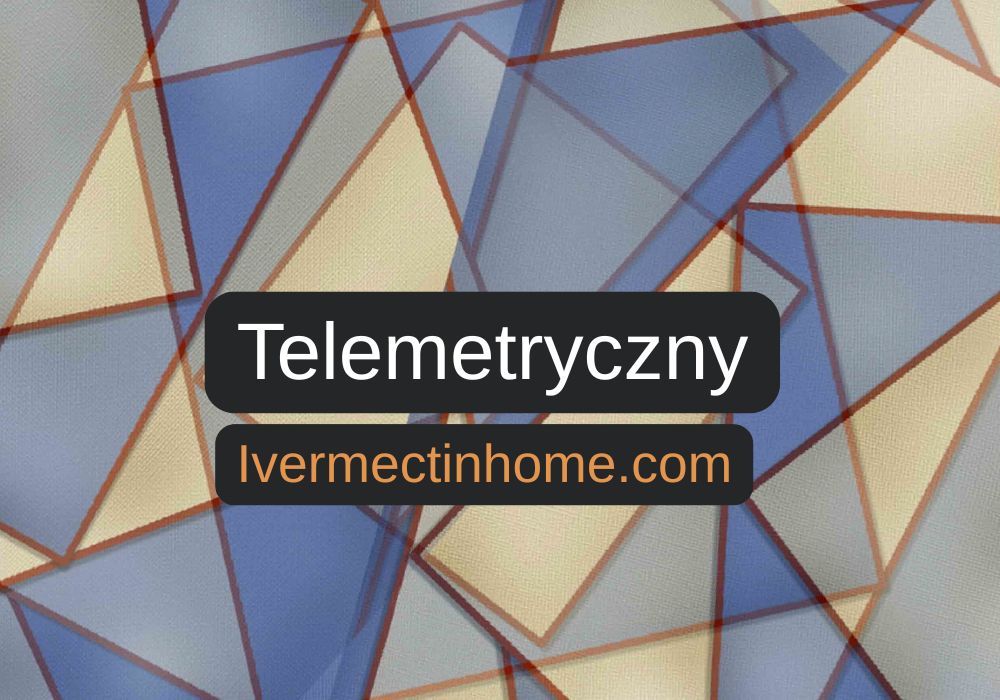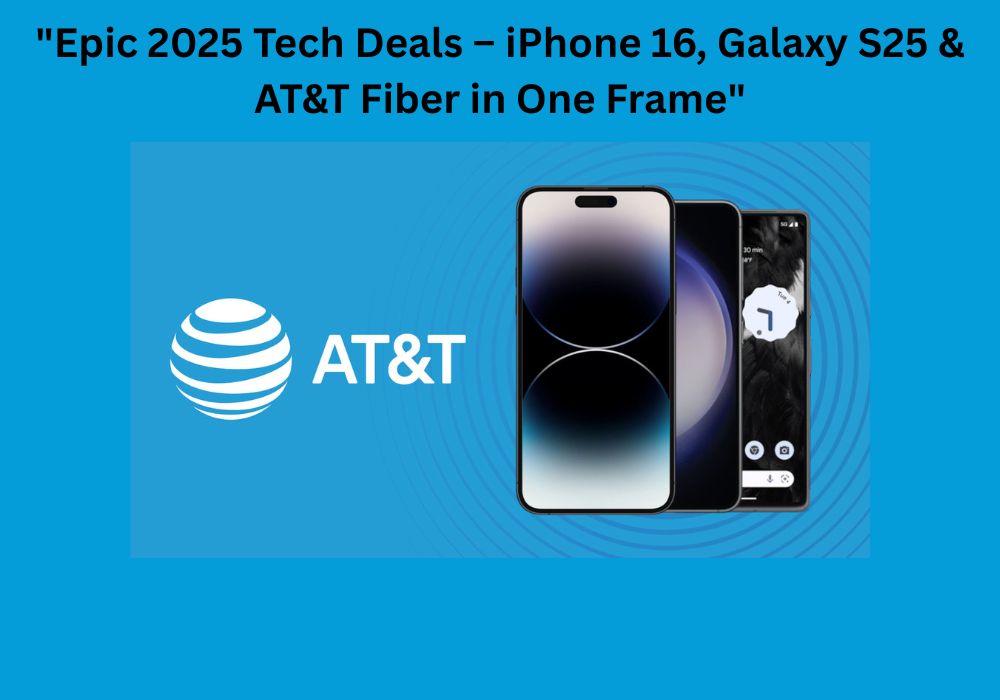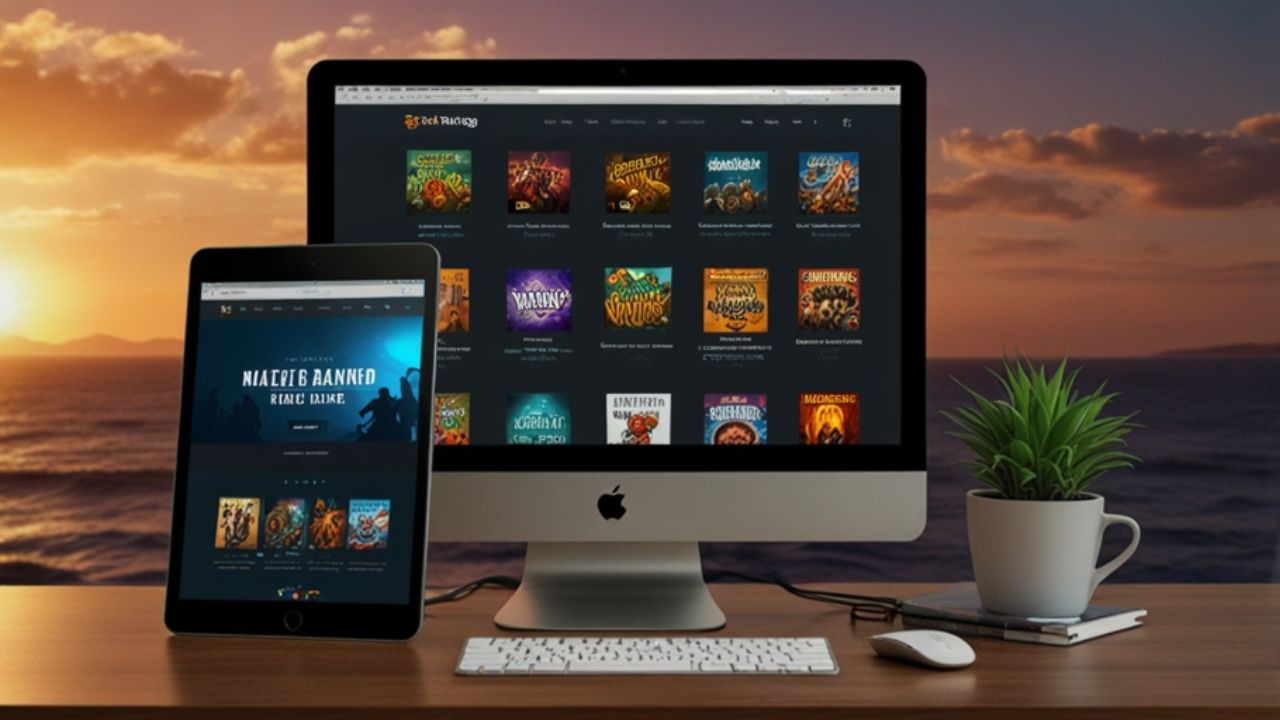Technology
Thothub and the Future of Digital Content Sharing Platforms

Thothub has become a polarizing topic of discussion in recent years, often drawing attention for its controversial approach to content sharing. While some hail it as a hub for free expression and unfiltered access to media, others criticize it for issues surrounding privacy and ethical content distribution. In this article, we will delve deep into what Thothub is, why it has gained notoriety, and the debates it has sparked in the online world.
What Is Thothub?
Thothub emerged as a platform for users to share and access a wide variety of content, including images, videos, and other forms of media. Unlike traditional platforms, it often skirts conventional guidelines for copyright and content moderation. This has made it a hotspot for controversies, particularly in areas related to intellectual property and personal privacy.
Its ease of use and access to exclusive content have contributed to its rapid rise in popularity, but not without significant backlash.
How Does Thothub Work?
Thothub operates as a user-driven platform where anyone can upload and share media. Its interface is relatively simple, allowing for quick uploads and easy navigation. Most of its appeal lies in the type of content it offers, which often includes materials that are not freely available elsewhere.
Key Features of Thothub
- User-Generated Content: The platform relies on contributions from its community, leading to a diverse array of uploads.
- Minimal Moderation: Unlike mainstream platforms, Thothub often enforces fewer restrictions, resulting in questionable content.
- Access to Exclusive Content: A significant draw for users is the ability to view premium or subscription-only materials without direct payment.
The Legal and Ethical Issues Surrounding Thothub
Thothub has found itself embroiled in numerous legal battles due to copyright infringement and privacy violations. Many creators and influencers have criticized the platform for hosting their paid or subscription-based content without permission.
Copyright Infringement
The primary legal issue with Thothub revolves around unauthorized sharing of copyrighted material. Whether it’s a video clip, image, or other media, the platform has often been accused of enabling piracy.
Privacy Concerns
In addition to copyright issues, Thothub has been criticized for hosting content that breaches personal privacy. Many individuals have found their private or exclusive content shared on the platform without their consent, sparking outrage and legal actions.
Why Is Thothub So Popular?
Despite its controversies, Thothub continues to attract a vast number of users. Its popularity can be attributed to several factors:
- Accessibility: Users can access premium content without paying subscription fees.
- Anonymity: The platform allows for anonymous uploads and downloads, which appeals to those seeking discretion.
- Wide Variety of Content: From exclusive celebrity materials to niche media, Thothub offers something for everyone.
Thothub’s Impact on Content Creators
The rise of platforms like Thothub has significantly impacted content creators, especially those who monetize their work through subscriptions. Many creators have reported substantial losses due to piracy, while others have expressed frustration over the lack of legal recourse to protect their intellectual property.
The Creator’s Perspective
For creators, Thothub represents a direct threat to their livelihood. By offering their paid content for free, the platform undermines the value of their work and discourages legitimate subscribers.
Efforts to Combat Piracy
Some creators have resorted to watermarking their content or using legal action to prevent unauthorized sharing. However, the anonymous nature of Thothub’s user base makes enforcement challenging.
The Role of Governments and Organizations
Governments and copyright protection agencies have taken notice of platforms like Thothub. Efforts are underway to introduce stricter regulations for online content-sharing platforms to curb piracy and protect intellectual property.
Proposed Solutions
- Stronger Copyright Laws: Some governments are pushing for updated legislation to address the challenges posed by modern content-sharing platforms.
- Platform Accountability: Advocates are calling for greater responsibility from platforms like Thothub to monitor and remove illegal content.
Can Thothub Be Regulated?
Regulating a platform like Thothub is easier said than done. Its decentralized nature and global user base make enforcement a daunting task. While some countries have succeeded in blocking access to the site, these measures are often circumvented by users through VPNs and other tools.
Thothub’s Future in a Changing Digital Landscape
As the digital world continues to evolve, platforms like Thothub will likely face increasing scrutiny. Whether through stricter regulations or changing user behaviors, the platform may be forced to adapt or risk obsolescence.
A Double-Edged Sword
While Thothub offers undeniable convenience and access, its long-term viability is threatened by its inability to align with legal and ethical standards.
Conclusion
Thothub is a fascinating yet controversial player in the digital content-sharing space. While it offers users unparalleled access to exclusive content, it also raises significant legal and ethical questions. As governments, creators, and organizations work to address these challenges, the future of Thothub remains uncertain.
FAQs
What is the main purpose of Thothub?
Thothub serves as a platform for users to share and access media, often including exclusive or premium content.
Is Thothub legal?
The legality of Thothub varies by jurisdiction, but it frequently faces accusations of copyright infringement and privacy violations.
Why do users flock to Thothub?
Many users are drawn to Thothub for its free access to otherwise paid or exclusive content.
How can creators protect themselves from platforms like Thothub?
Creators can watermark their content, use legal measures, and advocate for stricter regulations to combat unauthorized sharing.
Can governments shut down Thothub?
While some governments have blocked access to Thothub, its decentralized nature makes a complete shutdown challenging.
What are the ethical concerns with Thothub?
Thothub has been criticized for violating copyright laws, breaching personal privacy, and undermining the livelihoods of content creators.
Technology
Telemetryczny: The Complete Guide to Remote Data Measurement Technology

What is Telemetric Technology?
Telemetryczny, derived from the Greek words “tele” (distant) and “metron” (measure), represents cutting-edge technology that enables automatic measurement and wireless transmission of data from remote sources to receiving equipment for monitoring purposes. This revolutionary approach to data collection has transformed industries ranging from healthcare and automotive to environmental monitoring and space exploration.
Understanding Remote Measurement Systems: Core Components and Functionality
Essential Components of Modern Systems
These advanced systems consist of several critical components that work together to ensure accurate remote data measurement:
Sensors and Transducers: The foundation of any telemetryczny system lies in its sensors, which convert physical parameters such as temperature, pressure, humidity, or motion into electrical signals. These devices serve as the primary data collection points in remote monitoring applications.
Data Acquisition Units: These sophisticated devices collect, process, and prepare sensor data for transmission. They often include analog-to-digital converters, signal conditioning circuits, and microprocessors that ensure data accuracy and reliability.
Transmission Systems: Remote monitoring systems utilize various transmission methods including radio frequency (RF), cellular networks, satellite communication, and internet protocols to send data from remote locations to central monitoring stations.
Receiving and Processing Equipment: At the destination, specialized equipment receives transmitted data, processes it into usable formats, and presents it through user interfaces, databases, or automated control systems.
Applications of Remote Measurement Technology Across Industries
Healthcare and Medical Monitoring
In healthcare, Telemetryczny, technology has revolutionized patient monitoring and care delivery. Remote patient monitoring systems use advanced devices to track vital signs, medication adherence, and chronic disease management from patients’ homes, reducing hospital visits and improving quality of life.
Key Healthcare Applications:
- Cardiac monitoring and arrhythmia detection
- Blood glucose monitoring for diabetic patients
- Blood pressure and heart rate tracking
- Medication compliance monitoring
- Post-surgical recovery monitoring
Automotive Monitoring Systems
Modern vehicles extensively use remote measurement technology for performance optimization, safety enhancement, and maintenance scheduling. These systems continuously monitor engine parameters, vehicle diagnostics, and driver behavior to improve overall automotive experience.
Automotive Features:
- Engine performance monitoring
- GPS tracking and navigation assistance
- Vehicle diagnostics and predictive maintenance
- Fleet management and optimization
- Emergency response systems
Environmental Monitoring Solutions
Environmental scientists and researchers rely heavily on remote measurement systems to monitor ecological conditions, weather patterns, and pollution levels across vast geographical areas. These systems provide crucial data for climate research, disaster prediction, and environmental protection efforts.
Environmental Applications:
- Weather station data collection
- Air and water quality monitoring
- Wildlife tracking and conservation
- Agricultural monitoring and precision farming
- Seismic activity detection
Industrial and Manufacturing Applications
Manufacturing facilities use remote measurement technology or Telemetryczny, to optimize production processes, ensure equipment reliability, and maintain quality control standards. These systems enable real-time monitoring of machinery performance, environmental conditions, and production metrics.
Advantages of Remote Measurement Technology
Real-Time Data Access
These systems provide immediate access to critical information, enabling rapid decision-making and prompt response to changing conditions. This real-time capability is essential for applications where timing is crucial, such as medical emergencies or industrial safety monitoring.
Cost-Effective Monitoring
By eliminating the need for manual data collection and on-site personnel, remote measurement systems significantly reduce operational costs while improving data accuracy and consistency. Organizations can monitor multiple remote locations from a centralized facility, optimizing resource allocation.
Enhanced Safety and Reliability
This technology allows monitoring of hazardous or inaccessible locations without putting personnel at risk. This capability is particularly valuable in industries such as oil and gas, mining, and nuclear power, where human safety is paramount.
Scalability and Flexibility
Modern remote measurement systems can easily scale to accommodate growing monitoring needs and adapt to changing requirements. Wireless communication protocols and modular designs enable quick deployment and system expansion.
Types of Remote Communication Technologies
Wireless Monitoring Solutions
Radio Frequency (RF) Systems: Traditional RF-based systems operate on various frequency bands and offer reliable short to medium-range communication. These systems are commonly used in industrial monitoring and local area networks.
Cellular Network Integration: Cellular-based monitoring systems leverage existing mobile network infrastructure to provide wide-area coverage and reliable data transmission. These systems support various cellular technologies including 4G LTE and emerging 5G networks.
Satellite Communication: For remote locations where terrestrial communication is unavailable, satellite-based systems provide global coverage and reliable data transmission capabilities.
Internet of Things (IoT) Integration
Modern remote measurement systems increasingly integrate with IoT platforms, enabling seamless connectivity, cloud-based data storage, and advanced analytics capabilities. This integration enhances system functionality and provides powerful tools for data analysis and visualization.
Challenges and Considerations in Implementation
Data Security and Privacy
As remote measurement systems transmit sensitive information over various communication channels, ensuring data security and privacy is crucial. Organizations must implement robust encryption protocols, access controls, and compliance measures to protect transmitted data.
Power Management
Remote monitoring devices must operate reliably with limited power sources. Efficient power management strategies, including low-power components, energy harvesting, and battery optimization, are essential for long-term operation.
Signal Interference and Reliability
These systems must maintain reliable communication despite environmental challenges, signal interference, and varying transmission conditions. Proper system design, antenna selection, and signal processing techniques help ensure consistent performance.
Future Trends in Remote Measurement Technology
Artificial Intelligence Integration
The integration of AI and machine learning algorithms with remote monitoring systems will enable predictive analytics, automated decision-making, and enhanced system optimization. These capabilities will further improve efficiency and reduce operational costs.
Edge Computing Applications
Edge computing technology will enable these systems to process data locally, reducing latency, bandwidth requirements, and dependency on central processing facilities. This approach will enhance system responsiveness and reliability.
Advanced Sensor Technologies
Emerging sensor technologies, including nanosensors and biosensors, will expand remote measurement applications into new domains and enable more precise and diverse measurements.
Implementing Remote Monitoring Solutions: Best Practices
System Design Considerations
Successful implementation requires careful consideration of monitoring requirements, environmental conditions, communication protocols, and scalability needs. Proper system design ensures optimal performance and long-term reliability.
Maintenance and Support
Regular maintenance, calibration, and system updates are essential for maintaining accuracy and reliability. Establishing comprehensive maintenance schedules and support procedures ensures consistent performance.
Training and User Adoption
Effective training programs and user-friendly interfaces are crucial for successful system adoption. Organizations must invest in user education and support to maximize system benefits.
Conclusion: The Future of Remote Data Measurement
Telemetryczny, system continues to evolve and expand its applications across numerous industries and sectors. As communication technologies advance and sensors become more sophisticated, these systems will play an increasingly important role in enabling efficient, safe, and cost-effective monitoring solutions.
The integration of emerging technologies such as 5G networks, artificial intelligence, and edge computing will further enhance capabilities, opening new possibilities for remote data measurement and analysis. Organizations that embrace these technologies will gain significant competitive advantages through improved operational efficiency, enhanced safety, and better decision-making capabilities.
Understanding and implementing telemetryczny solutions is essential for organizations seeking to optimize their operations, improve safety standards, and leverage the power of remote data measurement in today’s connected world.
READ ALSO:
Business
Top PLG Supplies to Supercharge Your Product-Led Growth Strategy in 2025

In today’s SaaS-driven ecosystem, Product-Led Growth (PLG) is more than just a strategy—it’s the engine driving user acquisition, retention, and expansion. At the heart of this model lies a set of tools and platforms commonly referred to as “PLG supplies.” These solutions streamline everything from onboarding to analytics, helping businesses unlock true scalability without relying on traditional sales pipelines.
This guide explores the most effective PLG supplies available today, showing how each can enhance your product experience and accelerate growth.
What Are PLG Supplies and Why Do They Matter?
PLG supplies refer to the tools and technologies that support a product-led approach to growth. Unlike sales-led strategies, PLG empowers users to discover, try, and buy your product directly.
With the right PLG stack, companies can improve user onboarding, monitor engagement, and drive conversions through product experience. These tools ensure that your product effectively sells itself.
Why does this matter? Because in 2025, user expectations demand seamless digital experiences. PLG supplies help businesses meet those expectations while cutting customer acquisition costs and boosting retention.
Core Categories of PLG Supplies
1. Product Onboarding Tools
First impressions matter. Onboarding tools guide new users through the product, ensuring they reach the “aha” moment quickly.
No-code platforms like Userpilot and Appcues allow product teams to create onboarding flows without engineering support.
Interactive walkthroughs, tooltips, and checklists can significantly increase user activation and reduce churn from the start.
2. Product Analytics Solutions
Understanding how users interact with your product is key to improving it. That’s where analytics platforms come in.
Solutions like Mixpanel and Amplitude let teams track user behavior, feature adoption, and drop-off points in real time.
Armed with these insights, teams can make data-informed decisions, leading to higher engagement and better retention.
3. In-App Messaging Platforms
Real-time communication enhances the user journey. In-app messaging tools like Intercom and Drift engage users at the right moment.
These tools allow for contextual onboarding nudges, feature announcements, and customer support.
Personalized messages triggered by user actions improve product adoption and build stronger customer relationships.
4. Product Adoption Software
Beyond onboarding, it’s important to keep users engaged and exploring new features.
Platforms like Pendo and Whatfix help guide users to underused or advanced features through in-app guides and banners.
The result is improved feature usage, better customer satisfaction, and ultimately, higher lifetime value.
5. Customer Success Platforms
PLG doesn’t eliminate the need for customer support—it transforms it.
Tools such as Gainsight and Totango enable teams to monitor customer health proactively and take timely action to reduce churn.
They also support customer segmentation, making it easier to personalize outreach and maintain long-term relationships.
Supporting Tools That Accelerate PLG
Trial Conversion & Freemium Management Tools
PLG thrives on free trials and freemium models. Effectively managing them is crucial for achieving success.
Tools that analyze user activity during trials help identify drop-off points and optimize upgrade prompts.
Clever nudges and timely CTAs can turn trial users into paying customers without pushy sales tactics.
Product-Qualified Lead (PQL) Software
PQLs are users who’ve demonstrated buying intent by engaging meaningfully with your product.
Tools like MadKudu and Breadcrumbs track product usage and sync qualified leads with your CRM.
This ensures sales teams reach out only when leads are truly ready to convert, improving efficiency.
Usage-Based Pricing & Billing Tools
PLG companies often adopt usage-based models to align price with value.
Billing tools like Charge bee and Stripe Billing allow dynamic pricing tied to user activity.
This approach boosts customer satisfaction and helps companies scale revenue predictably.
Building Your Ideal PLG Software Stack
Not every tool fits every business. Selecting the right PLG stack depends on your company’s size, goals, and resources.
Early-stage startups might focus on onboarding and analytics, while mature businesses integrate customer success and billing automation.
The key is choosing interoperable tools that create a seamless product experience from discovery to retention.
Make sure your stack integrates with core platforms like your CRM, marketing automation software, and data warehouse.
Always pilot tools before full rollout to measure their impact and ensure they align with your product goals.
Final Thoughts: Choosing the Right PLG Supplies for Your Stage
Startups and enterprises have different needs when it comes to PLG supplies.
Startups should prioritize tools that boost activation and provide insight into user behavior.
Larger companies may benefit from advanced customer success platforms and revenue optimization tools.
Don’t fall into the trap of tool overload. Focus on essentials and scale your stack as your product matures.
Remember, PLG is about empowering users to succeed. The right tools simply make that easier.
FAQs
1. What are PLG supplies in a SaaS context?
They are tools and platforms that support product-led growth by enhancing onboarding, engagement, analytics, and conversion.
2. How do product analytics tools improve PLG strategy?
They offer visibility into user behavior, helping you refine features and boost adoption.
3. Which PLG onboarding tools are best for startups?
Userpilot, Appcues, and Chameleon are great no-code tools to guide new users.
4. How does in-app messaging support product-led growth?
It engages users in real time, provides helpful nudges, and drives feature discovery.
5. What’s the role of customer success in PLG?
Read Also:
Boost Organic Traffic With Garage2Global: Smart SEO That Scales
Technology
Epic 2025 Deals: iPhone 16, Galaxy S25 & AT & T Fiber – Everything You Need to Know

Looking to upgrade your tech life? We’ve got you covered. From the iPhone 16 and Samsung Galaxy S25 to blazing-fast AT&T Fiber plans, this comprehensive guide walks you through standout deals and in-depth comparisons so you can make the best choices—without sacrificing features.
iPhone 16: Cutting-Edge Intelligence and Premium Craftsmanship
The iPhone 16 lineup blends powerful performance with smart design. At its heart is the A18 chip, offering lightning-fast processing and a 16‑core Neural Engine capable of 35 trillion operations per second—perfect for AI tasks and seamless multitasking.
Apple Intelligence unlocks advanced tools like “Clean Up” for photo editing, intuitive Siri enhancements, and the innovative Camera Control Button, allowing quick access to shooting modes and features. The iPhone 16 Pro steps it up with a quad‑pixel 48 MP main camera, 5× optical zoom, Lidar, and pro-level video at 4K 120 fps Dolby Vision—ideal for creators.
The phone also features Wi‑Fi 7, improving connectivity across smart homes, and a refined thermal system that sustains high performance over prolonged use. Plus, storage options and long-term iOS support keep your investment lasting for years.
Why it stands out: It’s not just about speed—the iPhone 16 gives you professional imaging tools, AI boosts, and future-proof tech, all wrapped in Apple’s premium design.
Galaxy S25: Slim, Smart, and AI-Infused
Samsung’s Galaxy S25 is a marvel of compact engineering, combining flagship features in a lighter, 6.2‑inch form factor. At its core is the Snapdragon 8 Elite, tuned for improved machine learning and efficient cooling—delivering consistently smooth performance.
The device includes Wi‑Fi 7, premium Gorilla Glass Victus 2, and ultra-fast charging (25 W standard, 45 W on the S25 Plus). The 50 MP triple-camera setup with ProVisual Engine enhances photos via AI-driven imaging and HDR 10-bit video.
What puts the S25 over the top is its AI. Galaxy AI tools like Call Assist, Audio Eraser, Circle to Search, and Writing Assist are woven into the user experience for enhanced productivity and creativity. Samsung commits to seven years of software updates, adding long-term value.
Why it stands out: The S25 offers flagship performance, smart AI features, and premium craftsmanship—with a surprisingly compact form and extended software lifespan.
Side-by-Side Showdown: iPhone 16 vs Galaxy S25
| Feature | iPhone 16 / Pro | Galaxy S25 |
|---|---|---|
| Processor | A18 chip, 16-core NPU | Snapdragon 8 Elite |
| Display | 6.1–6.9″ Retina OLED, premium build | 6.2″ FHD+ LTPO OLED, Gorilla Glass Victus 2 |
| Camera | Quad-pixel 48 MP, 5× zoom, Dolby 4K120 | 50 MP triple + AI imaging, HDR 10-bit video |
| AI & Intelligence | Apple Intelligence, Siri advancements | Galaxy AI suite (Call Assist, Writing Assist) |
| Connectivity | Wi‑Fi 7, eSIM, improved thermals | Wi‑Fi 7, satellite link, fast charging |
| Longevity | 5+ years updates | 7 years updates |
| Design & Weight | Premium titanium & glass, sleek | Compact, lightweight, armor build |
Both phones are high-end – pick iPhone 16 for pro-level content creation and Apple ecosystem deep-dive, or Galaxy S25 for compact form and AI-forward Android experience.
AT&T Fiber: Blazing Speeds and Smart Home Integration
AT&T’s fiber plans offer lightning-fast internet with real perks. Starting at 300 Mbps for $55/month, customers enjoy unlimited data and stable pricing for 12 months
For serious users, 1 Gbps is available for $80, and 2–5 Gbps plans cater to gamers, streamers, and smart homes . AT&T covers upload and download speeds equally, a key advantage over many competitors
New to the game is All‑Fi Pro, including a Wi‑Fi 7 gateway, auto hardware upgrades, free extenders, and advanced ActiveArmor security at no extra cost – a major home networking perk
AT&T is expanding rapidly, with over 27 million locations served and aiming for 30 million by mid‑2025—meaning fiber availability is growing fast. Business users also benefit from 5G backup and voice/security add-ons on select plans
Why it stands out: Fast, stable, and loaded with home-network enhancements, AT&T Fiber is an excellent choice for households that rely on smooth connectivity every day.
Why These Deals Matter Now
-
Massive Discounts – Retailers are offering deep cuts on both iPhone 16 and Galaxy S25 Ultra ahead of annual tech events.
-
Complementary Speed Tech – Wi‑Fi 7 in phones syncs seamlessly with next-gen AT&T hardware—future-proofing your setup.
-
Bundled Savings – Carriers are bundling perks—like free devices, referral bonuses, and lower home internet rates.
-
Longevity and Support – 5–7 years of updates mean these investments stay relevant for years.
-
Smart Home Synergy – Faster home internet enhances cloud backups, remote work, streaming, gaming, and home automation.
Checklist Before You Buy
-
Verify eligibility for trade-in deals and device bundles with your carrier.
-
Assess your upload/download needs—will 300 Mbps suffice, or do you need 1 Gbps+?
-
Check fiber availability at your address and ask about All‑Fi Pro benefits.
-
Choose between platforms: Apple for creative pros, Samsung for AI-rich Android and compact comfort.
-
Ask about warranties and maintenance—both phones include extensive update support.
FAQs
Q1: Which is better for photography—iPhone 16 or Galaxy S25?
If you want cinematic-level features and pro video, go with iPhone 16 Pro. For AI-enhanced photography in a smaller frame, Galaxy S25 is the pick.
Q2: Is Wi‑Fi 7 practical yet?
Yes. Wi‑Fi 7 boosts speeds and reliability—especially when paired with devices like AT&T’s All‑Fi Pro gateway.
Q3: How long will these phones receive updates?
Apple provides ~5 years of iOS updates; Samsung offers 7 years of OS and security patches for S25.
Q4: Is AT&T Fiber worth switching to now?
Definitely—plans start at $55/month with no price increases for a year, and high-tier plans include hardware upgrades and network security perks.
Q5: Can I bundle my phone and internet for savings?
Yes. Carriers offer discounts when bundling phones with home internet and referrals or loyalty incentives—check with your provider.
Read Also:
Android App Evolution: 4 Game-Changing Development Trends to Watch in 2025
-

 More7 months ago
More7 months agoThe Rise of Lillienu: Transforming Technology and Creativity
-

 Fashion7 months ago
Fashion7 months agoUnveiling the Secrets of Ceylan Eye Cream Reviews
-

 More7 months ago
More7 months agoSwindle Trilogy Website: A Must-Visit Hub for Book Lovers
-

 More7 months ago
More7 months agoThe Rise of Artofzio: Transforming Creativity in the Digital Era
-

 More7 months ago
More7 months agoInfluencersginewuld: Revolutionizing the Influencer Marketing Landscape
-

 More7 months ago
More7 months agoCeylan Eye Cream Reviews: Is It Worth the Hype?
-

 News6 months ago
News6 months agoThe Shocking Details of the Scott Levin 2011 Truck Accident
-

 Business7 months ago
Business7 months agoIvermectin: The Medication That Changed Global Health
